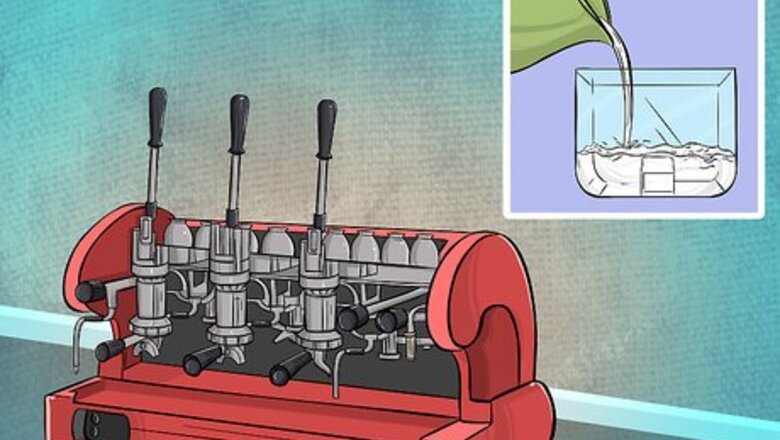
views
Priming the Machine
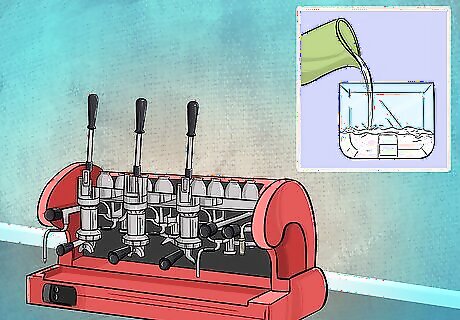
Fill the reservoir with water. Turn on a cold water tap and let it run for a minute. Either remove the reservoir and fill it at the tap, or fill a separate container and pour the water into the reservoir. If the machine has a lid, replace it when the reservoir is full. Do not fill the reservoir past the water line. Some commercial espresso makers have water piped directly into the machine. In this case, you don’t have to worry about filling the reservoir.
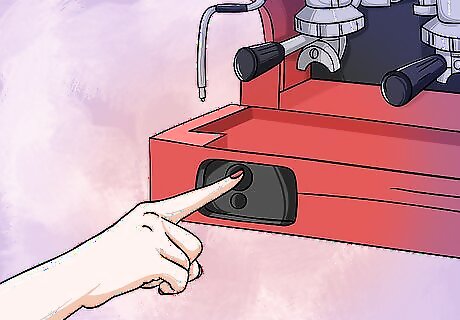
Turn on and preheat the machine. The power switch will most likely be located on the machine’s backsplash. Turn the switch to the "on" position and give the machine at least 15 minutes to warm up. This will give the machine time to heat the water and build the pressure required to force water through the grounds. Larger espresso machines may need up to 45 minutes to warm up. Check the manufacturer’s instructions for the exact preheating time.
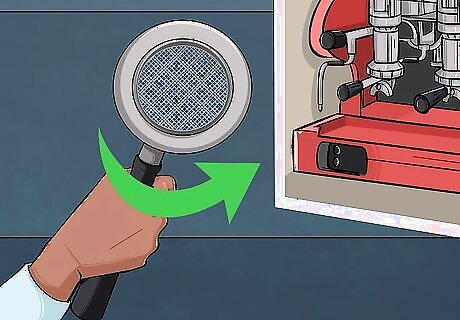
Set up the portafilter. The portafilter, or portable filter, is the handled cup component on an espresso machine that holds the coffee grounds. To get the portafilter ready, insert a filter basket into the basin. Then, insert the portafilter upward into the bottom of the group head and turn the portafilter to the right to lock it in place. If you have a machine that requires a new filter every time, you can use a paper or metal filter designed for your machine. Filter baskets and portafilters come in multiple sizes. Choose the right size portafilter and basket depending on whether you're making a single, double, or triple shot of espresso.
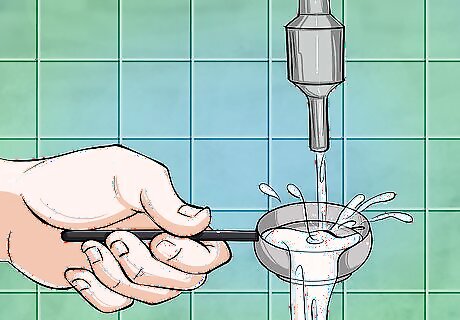
Rinse and dry the portafilter. Once the portafilter is in place, turn on the water for a single shot and allow it to pour through the group head and portafilter. This will rinse out any old coffee, detergent, or other particles. When the water has finished, remove the portafilter by turning the handle to the left and then pulling the portafilter down and out of the group head. Wipe the portafilter and group head dry with a clean towel. Return the portafilter to the locked position in the group head. Once the espresso machine is ready to go, always leave the portafilter in this position. This will prevent the machine from losing pressure and help it maintain the right temperature.
Making an Espresso Shot
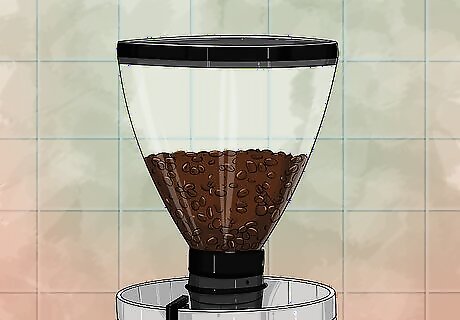
Measure and grind the beans. For a standard double shot of espresso, you'll need 18 to 21 grams of coffee beans. One of the keys to a good espresso shot is the grind of the beans. The espresso process requires very fine coffee grounds that are close to a powder. Transfer the beans to the grinder and grind them until you have grounds that are roughly the same size as salt grains. Once you’ve ground the beans, remove the portafilter from the group head and transfer the grounds to the portafilter. Don’t worry if the portafilter is overflowing slightly. The finer the beans are the stronger and more robust they’ll taste. If you’re looking for bold, flavorful coffee, grind the beans as finely as you can.
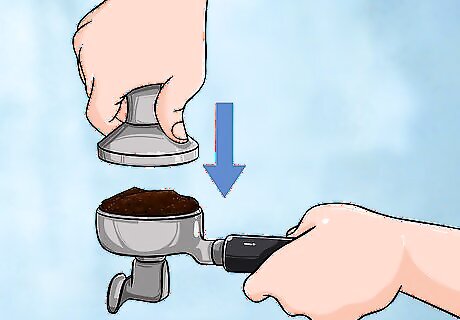
Even and tamp the grounds. Use your finger to distribute the grounds and level off the top. Brush any excess grounds into a bowl or knock box. To tamp the coffee and create a compressed espresso puck in the portafilter, you have to: Hook the portafilter onto the ledge of a counter to keep it in place. Place the tamper on top of the grounds. Hold your tamping arm perpendicular to the floor, so your elbow is at a 90-degree angle. Your wrist, arm, and elbow should all be in the same line as the portafilter. Apply 30 pounds of pressure evenly to the tamper to create a level bed of espresso grounds. Remove the tamper and check that the espresso is even and flat.
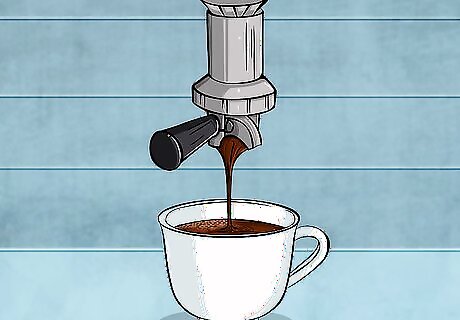
Pull the shot of espresso. Lock the portafilter into its position in the group head. Place a glass cup below the spout. Turn on the water. This will force the water through the compressed coffee in the portafilter, and the espresso will pour out the spout and into the cup. The full extraction should take about 25 to 45 seconds. The ideal shot of espresso will have a rust-colored crema on top and a dark espresso on the bottom.
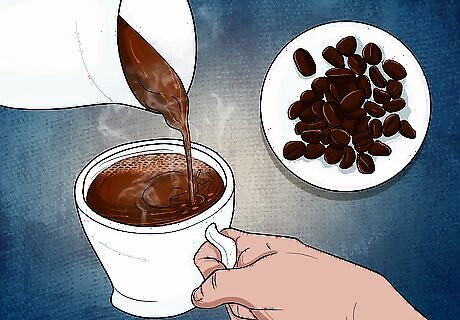
Transfer the shot to a serving glass. You can serve the espresso in the cup you poured the shot into, but be sure to stir it first if you do. Otherwise, transfer the shot to another glass or cup for serving, especially if you're going to be making a latte, cappuccino, or other espresso-based drink. Stirring or transferring the shot helps to distribute the crema throughout the liquid.
Steaming Milk
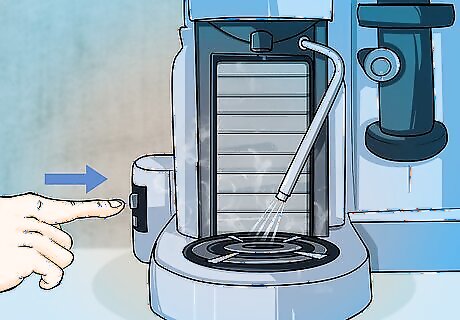
Purge the wand. It’s always a good idea to clean the steam wand before and after using it. This will ensure no contaminants get into the milk. Stand back from the steam wand and turn on the steam by opening the valve. Let the steam blow for about five seconds, and then close the valve to turn it off.
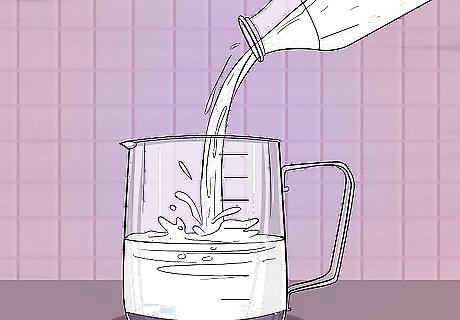
Measure and pour the milk. Espresso-based drinks come in many sizes, and the size of the drink will determine the amount of milk you use. Many coffee drinks are between 6 and 20 ounces (177 and 591 ml). Use the size of the coffee as a guide for how much milk to pour. Once you’ve measure the cold milk, pour it into a clean metal container. Don’t forget to subtract the espresso quantity from the milk. For instance, if you're making a 6-ounce (177-ml) coffee, you only need 5 ounces (148 ml) of milk if you made a single shot of espresso. Remember that the milk will froth up as it foams, so measure slightly less milk than you actually need. Only use cold milk for steaming, as this will ensure the best consistency.
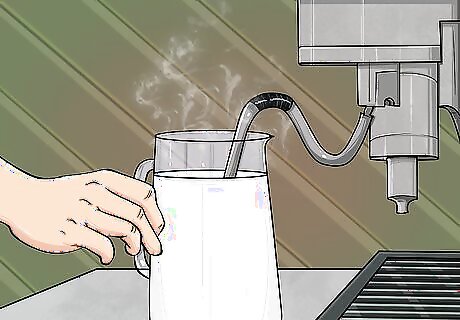
Submerge the wand and turn on the steam. Position the metal container so the steam wand tip is submerged in the milk. The tip of the wand should be near the middle of the milk. Hold the container at a 45-degree angle. Turn on the steam and allow it to froth the milk. As the milk increases in volume, move the cup down until the wand is just below the surface. Then, gently plunge the wand back down to continue aerating the milk. Continue frothing the milk like this until it reaches 140 F (60 C), or until the container is very hot to the touch. Turn off the steam.
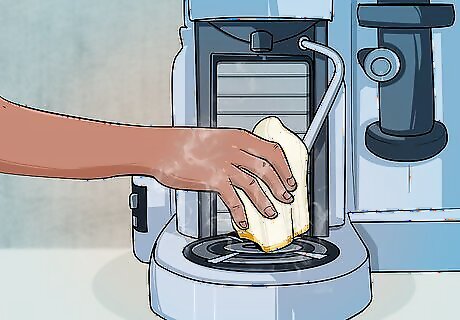
Purge the wand. Remove the container and set it aside. Turn on the steamer again to purge any excess milk. Let the steam run for about five seconds. Turn off the steam and wipe the wand with a damp towel. This will prevent milk from drying and hardening on the wand.
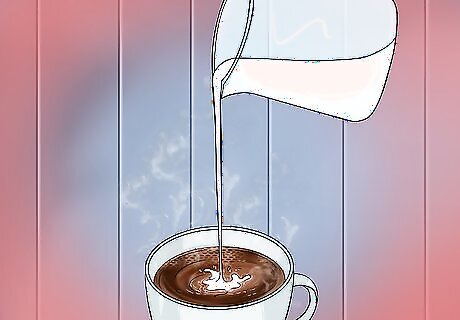
Pour the milk immediately into your espresso drink. As soon as the milk is hot and frothy enough, pour it with your prepared espresso and serve. You can also sweeten the drink with sugar, top it with cinnamon, or cover it in whipped cream if you like.



















Comments
0 comment